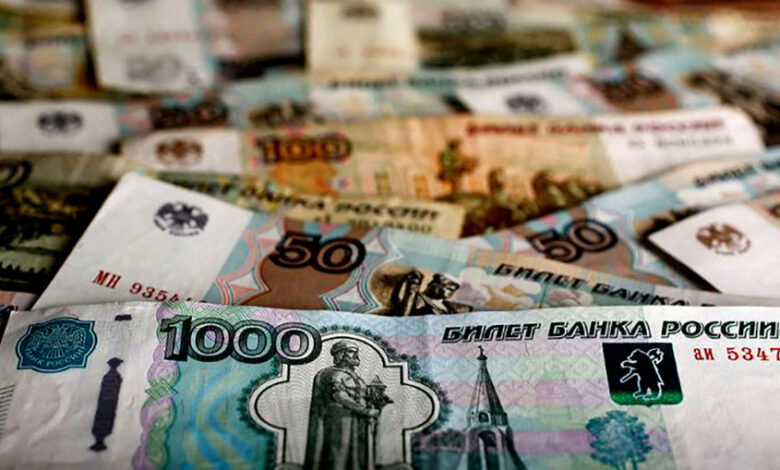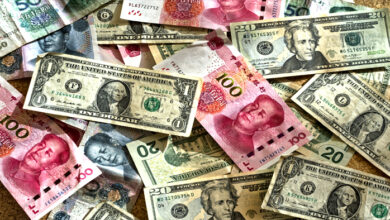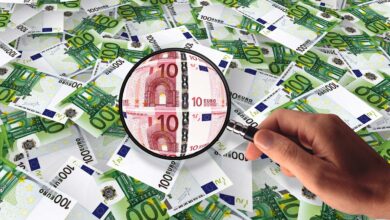Column-The “reverse currency wars” world is real: Mike Dolan

LONDON (Reuters) – “Reverse currency wars” are making the real world look like it’s upside down.
Fans of the Netflix (NASDAQ:NFLX) hit show “Stranger Things” know all too well how chaos and monsters from the show’s scary parallel universe seep into everyday life, causing a lot of damage.
One of the most popular economic policy ideas of the last ten years seems to be going through the same thing.
Goldman Sachs (NYSE:GS) and other financial firms have been warning for months that long-running “currency wars,” in which countries fight to keep exports from being hurt by a weakening U.S. dollar and overvalued domestic currencies, could be turned on their heads, which would be scary.
They think that the return of inflation, a hawkish Fed, and a strong dollar would force governments and central banks to rethink exchange rate orientation and race to keep up. They call this “reverse currency wars.”
In the decade after the U.S. Federal Reserve started buying bonds to stop deflation, many countries complained that the weaker dollar would hurt their trade in a low-growth world and force them to overheat by trying to match the Fed’s easy money.
All of that changed this year, when the Fed took a strong stand against inflation that was at its highest level in 40 years. The Fed did this by sharply raising interest rates, stopping the purchase of new assets, and planning to reduce its huge balance sheet of more than $8 trillion.
The result has been a skyrocketing dollar, with its index against other major currencies rising almost 20% over the past year. This has left U.S. trading partners with the opposite problem of trying to support rather than cap currencies out of fear that their weakness would make dollar-priced energy and food imports even more expensive, which would make sky-high inflation worse everywhere.
In the past week, the idea of “reverse currency wars” has become more real.
The turnabout was most obvious in the Swiss National Bank’s surprise interest rate hike on Thursday. This seemed to be a change in the bank’s overall policy, which had been to weaken the Swiss franc to avoid deflation and instead use its strength to fight imported inflation. Given that its current policy has helped it build up more than $1 trillion in foreign currency reserves, the change could be a big deal.
Goldman’s currency team told clients: “The move confirms our bullish view on the franc and is the strongest evidence yet of our ‘Reverse Currency Wars’ thesis, which says that the era of targeting weaker exchange rates is over,” The era of targeting weaker exchange rates is over, “they said,” adding that analysis showed a 1% rise in the franc cut inflation by 0.1-0.2 points and that the SNB would likely want a 5% rise in the franc’s value.
Dollar‘s gains over the past year in percentages: http://fingfx.thomsonreuters.com/gfx/mkt/gkplgelmevb/One.PNG
G4 inflation rates since 2000: https://fingfx.thomsonreuters.com/gfx/mkt/zdpxoexyzvx/Two.PNG
‘DEEPLY DISTURBING‘
But it is not by itself. This week, policymakers at the Bank of England made it clear that they, too, are talking about this upside-down world. They are nervously watching sterling’s 14 percent drop against the dollar in just a year and a 5 percent drop in the trade-weighted pound just this year.
Catherine Mann, a rate-setter at the Bank of England, said on Monday that one of the reasons she voted for a half-point increase in interest rates last week instead of the quarter-point increase that was given was to stop “inflation imported through a sterling depreciation.”
Even though her colleague and BoE chief economist Huw Pill played down explicit targeting or “fine-tuning” of sterling on Tuesday, which has been taboo in Britain since the pound was kicked out of the European exchange rate mechanism 30 years ago, the cat seems to be out of the bag. The pound is definitely a big deal.
The European Central Bank is becoming more and more hawkish, and inflation in the euro zone is at a record high. This is because energy prices are going up so quickly and the euro has lost almost 15% of its value against the dollar over the past year.
Last month, Francois Villeroy de Galhau, the head of the Bank of France, warned about a too-weak euro. He said, “A euro that is too weak would go against our goal of keeping prices stable.”
Japan is in a worse situation. It talks almost every day about how weak the yen is, which is now at its lowest level against the dollar in 24 years. At the same time, the Bank of Japan sticks to its policy of capping government borrowing rates by buying billions of dollars’ worth of bonds, even though inflation is creeping up and yields are going up around the world.
Hard to say how long Tokyo will be able to do the second thing while worrying about the first.
Emerging economies, many of which face much more unstable food and energy price inflation, have already tried to get ahead of Fed tightening over the past year. But a stronger dollar could force them to tighten the screws at a bad time.
Many people think the biggest risk is that the Fed’s promise of a “unconditional” war on inflation will put more and more pressure on the dollar in a world where dollar-priced commodity surges cement inflation expectations everywhere and force all other central banks to copy the U.S. central bank, for better or for worse.
Citi strategist Ebrahim Rahbari thinks that all of this points to “overtightening” around the world. He says that this is “deeply disturbing” for global markets because it means stocks will fall, bond yield curves will flatten, and financial conditions will get very tight.
“Reverse currency wars are very bad for risk assets,” he said, adding that the most vulnerable currencies are those of countries with more dovish central banks and weak economies.
If this kind of squeeze speeds up a global recession, there could be a lot of pressure on the Fed to back off. But problems with energy caused by the war, tight job markets after the pandemic, and political pressures ahead of the U.S. midterm congressional elections in November make it unlikely that things will get better this year.
It looks like the world will always be on its head.
Rates set by the most important central banks since 2000 can be seen in this graphic: http://fingfx.thomsonreuters.com/gfx/mkt/jnpweoaegpw/Three.PNG
Emerging Market Central Bank Rates Since 2000: https://fingfx.thomsonreuters.com/gfx/mkt/gdpzygmrzvw/Four.PNG
The author is Reuters News’s editor-at-large for finance and markets. His own thoughts are shown here.
(Written by Mike Dolan; edited by Tomasz Janowski; @reutersMikeD on Twitter (NYSE:TWTR))





